Montessori Materials: What are they?!
Last week, across the globe, Montessorians celebrated the life of Maria Montessori, who revolutionized the future of education. In honor of her work that we so deeply admire and treasure, we would like to share with you a deeper understanding of some of the material that is used in Montessori schools around the world. These unique materials and the training we have gone through as teachers make the Montessori method come alive at West Side Montessori!!!
Practical Life:
The practical life area is an integral part of our classroom. It provides the child with the means to learn everyday living skills which provide many benefits to the child, such as; order, concentration, coordination, and independence. The practical life area revolves around four areas; Care of Self, Care of the Environment, Grace and Courtesy, and Movement of Objects.
Sensorial:
The sensorial area in a Montessori classroom focuses on lessons and activities that help bring order to the child's many senses. The lessons and activities provided in the sensorial area of the classroom help children clarify, classify, and understand the world around them.
Paige is working on the trinomial cube. In this work, blocks are coded by size and color to represent the equation of (a+b+c)3. This 3-dimensional puzzle teaches Paige to look for patterns and spatial relationships as she builds the cube. The lid of the box provides assistance to her, as it displays the pattern the blocks take on as the cube is built. Before using this cube, Paige has already mastered the binomial cube (a+b)2, which works in much the same way.
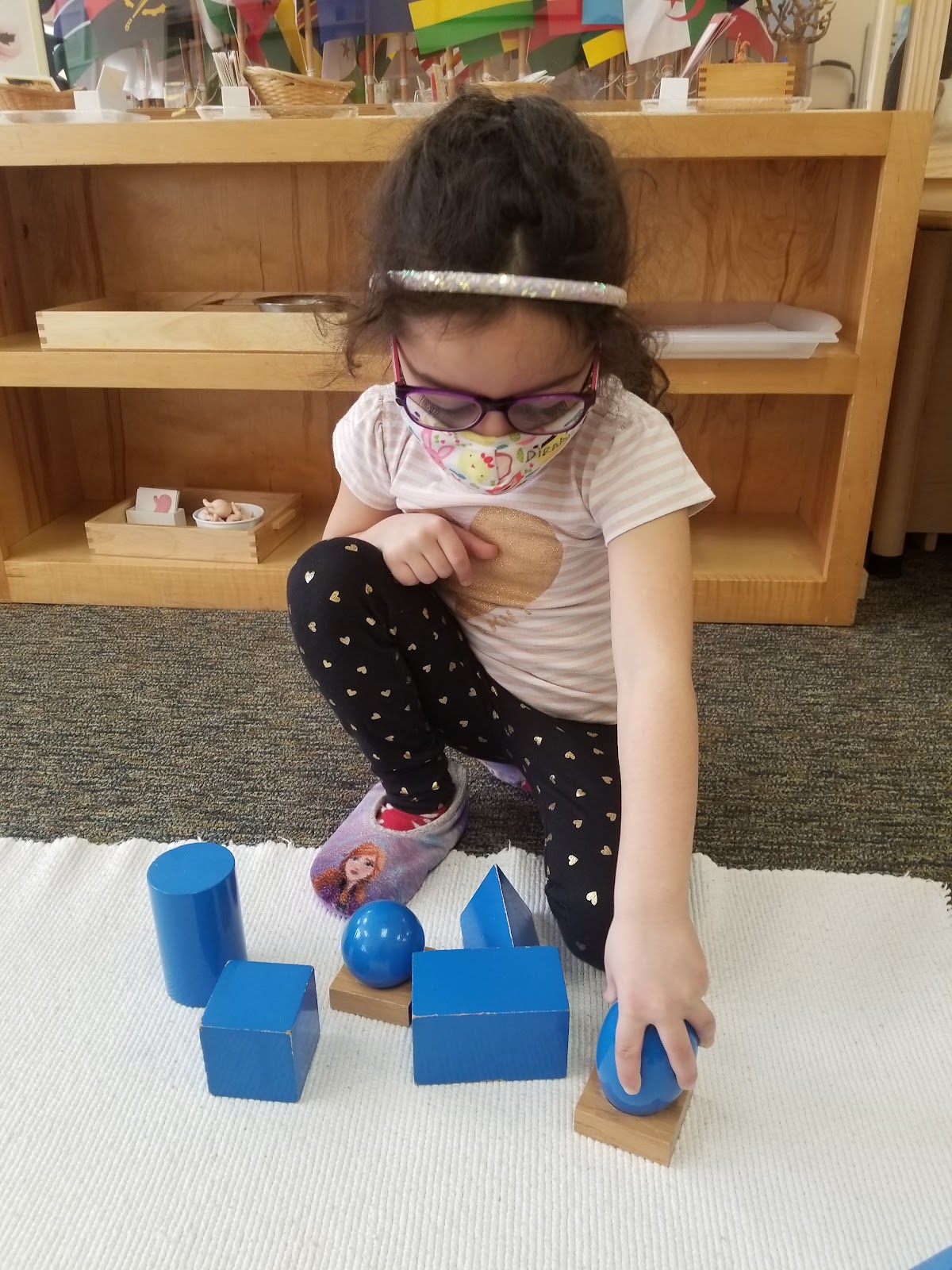 Nayla is working with some of the geometric solids. These three-dimensional shapes help develop a child’s stereognostic sense, which is their ability to perceive and understand both the form and nature of objects through touch. By working with these materials, children become aware of how shapes form the basis for everyday objects. This knowledge provides the foundation for future work in geometry, which falls into the Mathematics curriculum for older Montessori students.
Nayla is working with some of the geometric solids. These three-dimensional shapes help develop a child’s stereognostic sense, which is their ability to perceive and understand both the form and nature of objects through touch. By working with these materials, children become aware of how shapes form the basis for everyday objects. This knowledge provides the foundation for future work in geometry, which falls into the Mathematics curriculum for older Montessori students.
Language:
The Language Area permeates all areas of the Montessori classroom. The Montessori language materials isolate elements of language and offer 'keys' to the children in the exploration of language. It provides the child with many forms of language to help satisfy his desire to clearly communicate and more fully adapt to his culture.
Later, by blending these sounds together, Everett will begin to spell, then read phonetic words without laborious effort which you see Christian doing here using the movable alphabet:
Writing:
Once a child becomes successful with pre-writing focused practical life activities, has begun the process of learning letter sounds, and has shown the desire to write, it is appropriate to introduce writing. Here are a couple of works that introduce a child to writing.

Once a child becomes successful with pre-writing focused practical life activities, has begun the process of learning letter sounds, and has shown the desire to write, it is appropriate to introduce writing. Here are a couple of works that introduce a child to writing.
Callie is working with the sand tray. Callie spends a lot of time in the practical life and sensorial areas of the classroom strengthening the muscles in her hand and her pincer grasp. This work satisfies her inner desire to draw without having the frustration of trying to hold a pencil when her little hand isn’t ready to do so. Later, Callie will begin forming numbers and letters in the sand.

Harrison is working with the metal insets. Harrison completes this work by holding a colored pencil to carefully trace shapes. He starts with tracing the frame and once developmentally ready he will trace the inset. This work helps a child develop the fine motor control needed to write small letters. Creating patterns and designs is a secondary goal, but also increases a child’s ability to manipulate a pencil! Harrison is tracing a rectangle in order to make flags of each country in Africa. Harrison has completed 17 flags already and is determined to do all of them!
Math:
The exercises in the math area offer the children the 'keys' that they will need to send them on the road to further exploration and maturation of the mathematical mind.
One of the most popular and exciting parts of our math curriculum is our bead cabinet. It holds chains of beads in different lengths and colors and works on a whole host of different math skills. At its basic level, children are tasked with counting these beads, with chains as long as 1,000 units long. But these chains also work on skip counting and are designed to illustrate in concrete terms the concepts of both squaring and cubing of numbers.
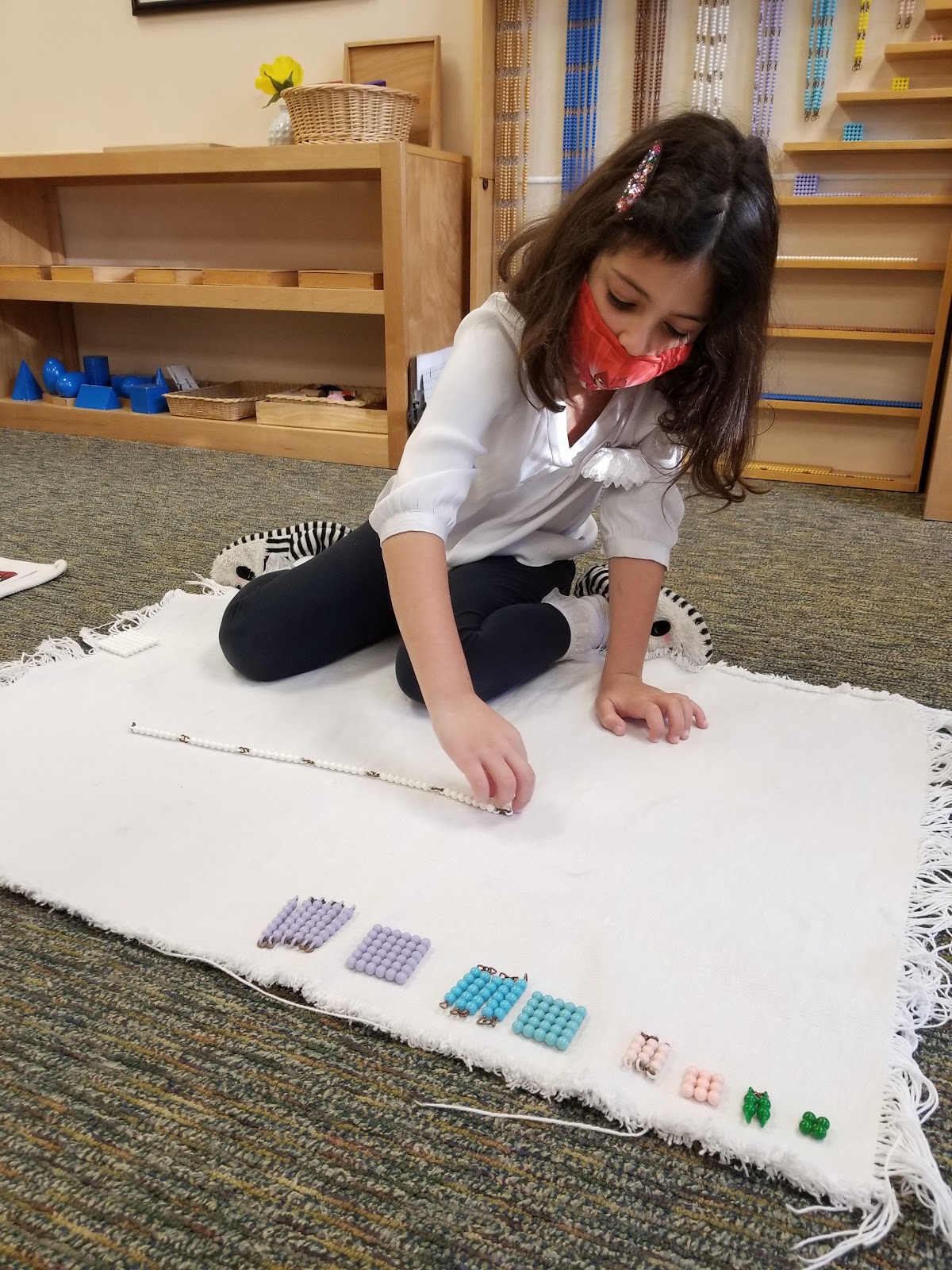
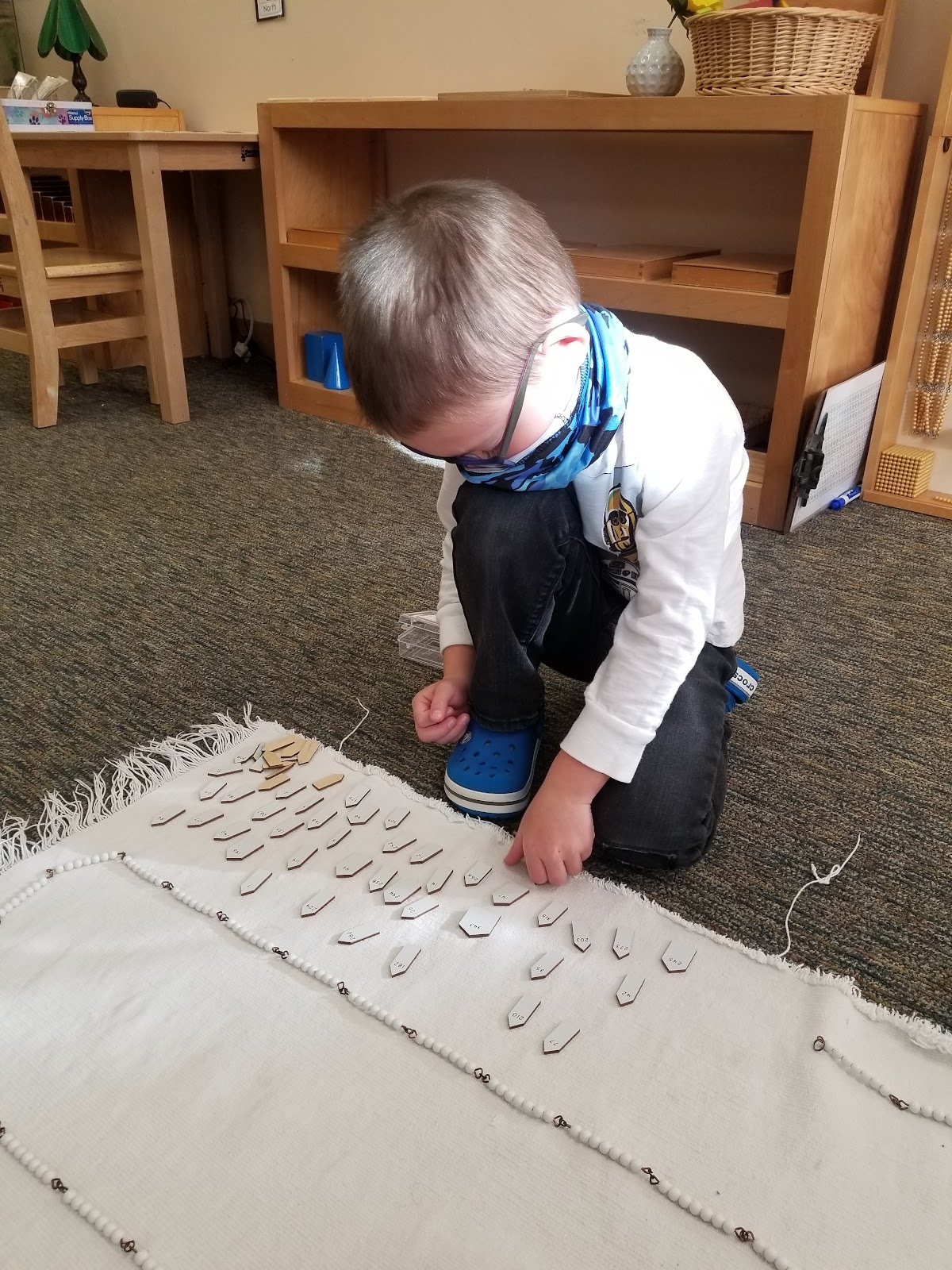 Gigi (left) is exploring the idea of squaring, as she bends each chain into a square shape. While Gigi is using the bead chains sensorially, Grant (right) is working on the cubing chain of seven as he counts the units in the chain, and marks every seventh bead with a marker that has the corresponding number printed on it.
Gigi (left) is exploring the idea of squaring, as she bends each chain into a square shape. While Gigi is using the bead chains sensorially, Grant (right) is working on the cubing chain of seven as he counts the units in the chain, and marks every seventh bead with a marker that has the corresponding number printed on it.

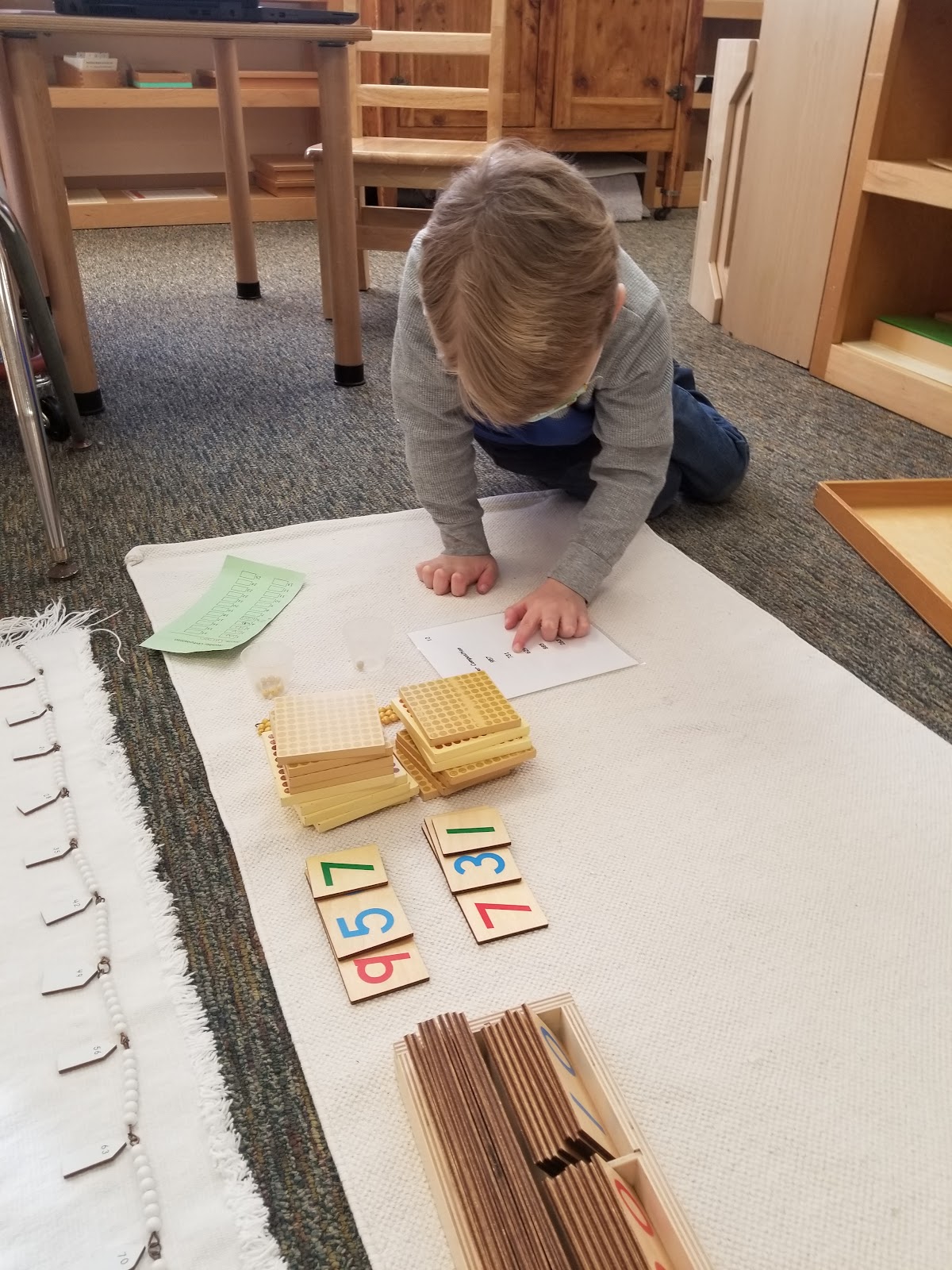 Edward (left) and Carson (right) are working with the Montessori Golden Bead Materials, more commonly known as “The Bank.”
Edward (left) and Carson (right) are working with the Montessori Golden Bead Materials, more commonly known as “The Bank.”
Students are able to use the bank materials once they have mastered the concepts of place value, and have solidified the connection between different places and their concrete partner: single golden beads for ones, ten bars for tens, flat squares for hundreds, and cubes for thousands. They then use these materials along with numeral cards to compose numbers of increasing complexity. When children are able to successfully compose numbers into the thousands place, they can then use these materials to create and solve addition, subtraction, multiplication, and division problems.
Cultural Subjects:
The Cultural curriculum refers to an integrated study that includes History, Biology, Geography, and Physical Science, as well as the Arts. Incorporating Cultural lessons into a student’s educational experience enables them to enrich their understanding of the world and their place in it.
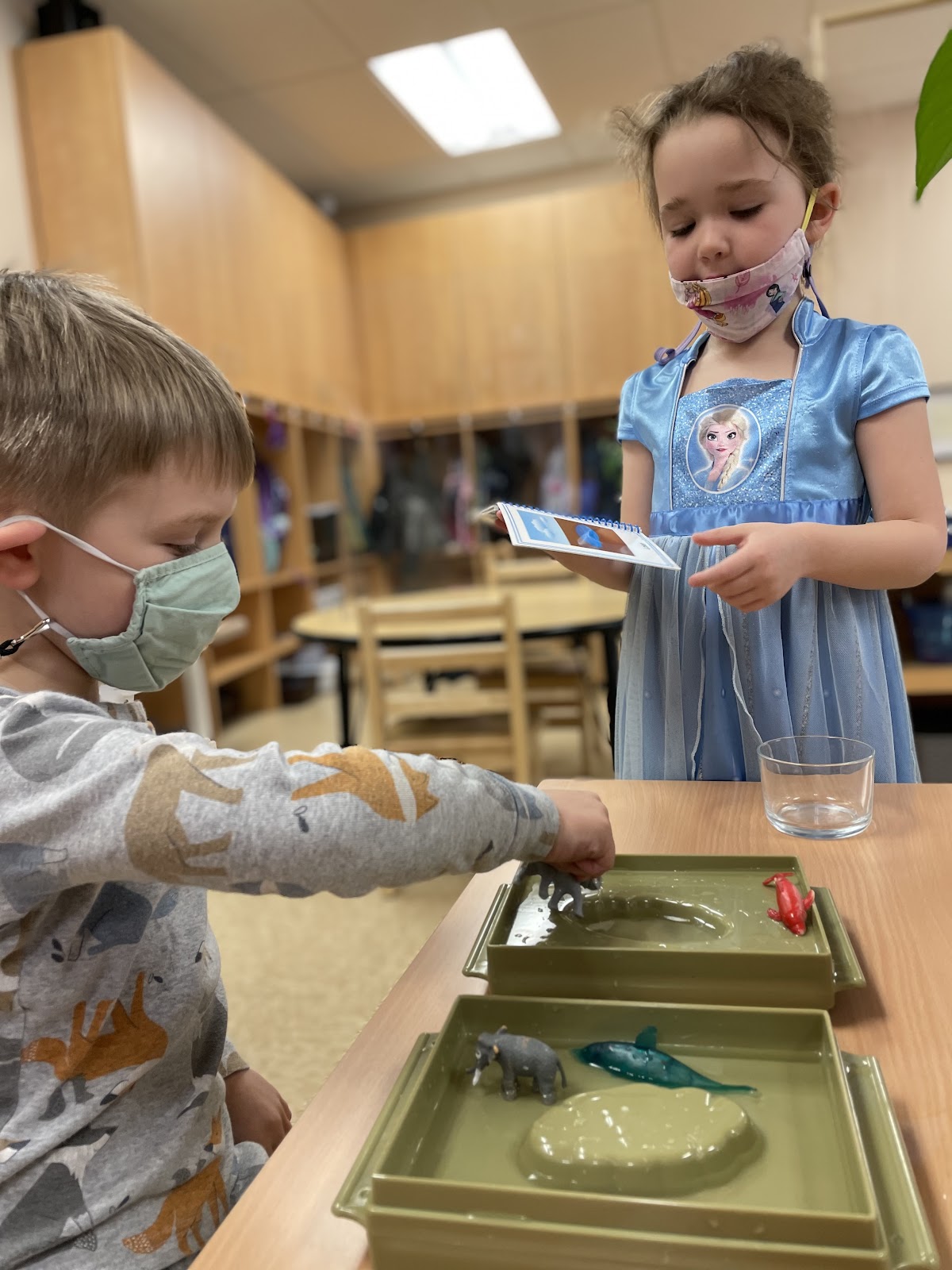
The Cultural curriculum refers to an integrated study that includes History, Biology, Geography, and Physical Science, as well as the Arts. Incorporating Cultural lessons into a student’s educational experience enables them to enrich their understanding of the world and their place in it.
Connor is working with the Montessori Land and Water Forms. They Introduce the child to a concrete experience of common topographical features on the Earth, as a part of our larger curriculum in Geography and the Cultural Subjects. Connor expressed that he could not remember the names of the landforms and Natalie walked over to the shelf, retrieved a land and water form book, and taught him the names all by herself—another beautiful aspect of Montessori.
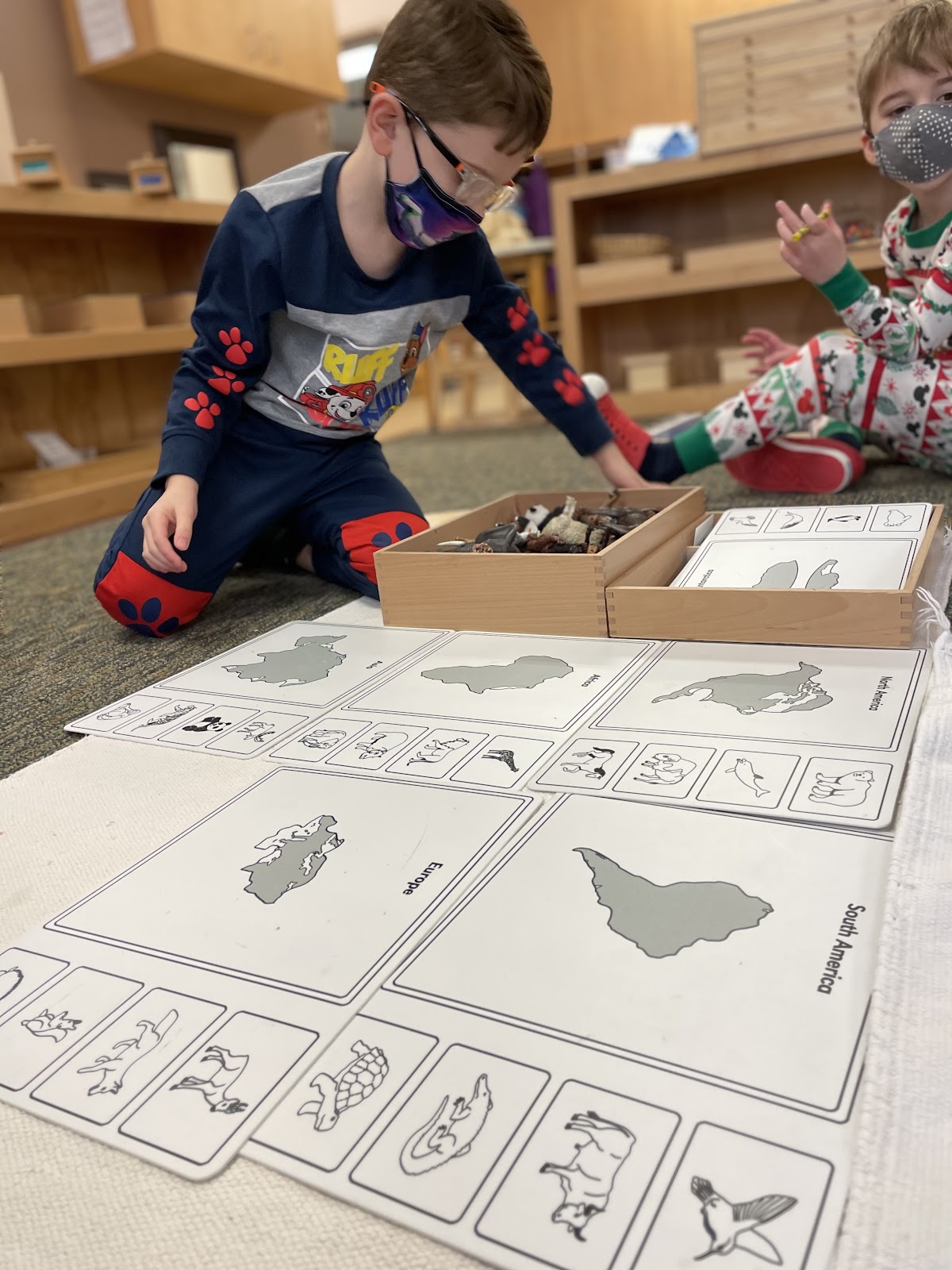
William has worked a lot with the Continent Map of the world. He is now taking his knowledge of the continents and learning about different animals that live on each continent. William matches the animals to the white control board as shown here and then transfers the animals to an enlarged continent map. This work allows us to see a variety of animals from all over the world and helps to give the child insight into the bigger world around them.
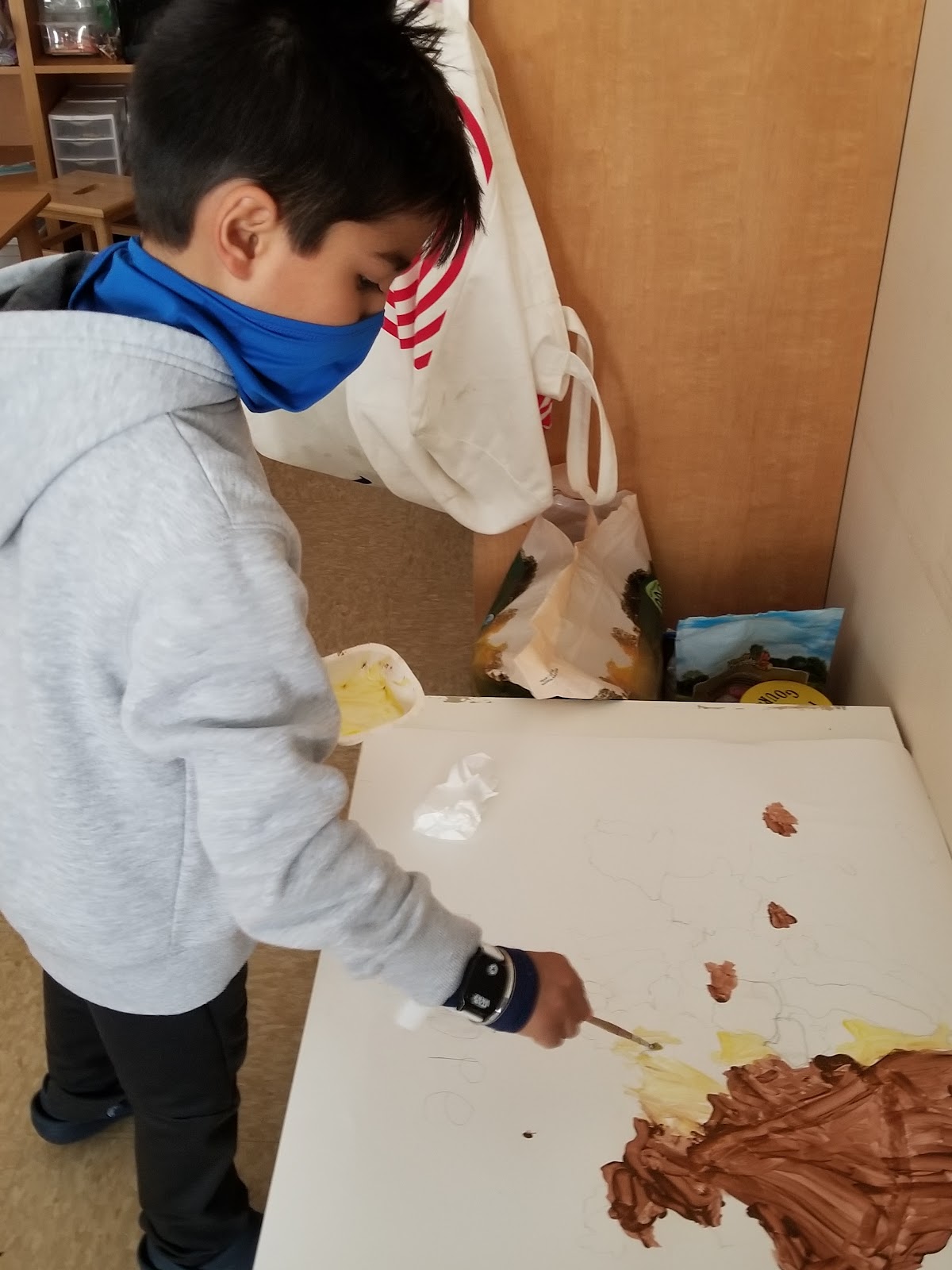 Arjan is painting the map of Europe. Starting with the map of the world and progressing through continents and then countries, the puzzle maps showcase the difference between land and water, and help to develop an appreciation for spatial awareness. Also, Maria Montessori placed each peg of the puzzle piece on the capital of each country...She was brilliant!!!
Arjan is painting the map of Europe. Starting with the map of the world and progressing through continents and then countries, the puzzle maps showcase the difference between land and water, and help to develop an appreciation for spatial awareness. Also, Maria Montessori placed each peg of the puzzle piece on the capital of each country...She was brilliant!!!
We hope you enjoyed a little insight into the Montessori materials. These materials are what makes a Montessori classroom what it is today. It is crazy to think that children over 100 years ago were using the same materials. It just proves that Maria Montessori was one amazing woman whose legacy continues to thrive at West Side Montessori.
Written by the teachers of the Poplar Room: Amy Wagner and Torey Bonde
Toledo Campus
Perrysburg Campus
West Side Montessori is an independent, accredited Montessori school educating children 13 months through 8th grade (preschool, kindergarten, elementary school, and middle school). We are one of the leading private schools in Toledo and the nation.
WSM does not discriminate on the basis of ethnic origin, race, religion, gender, gender identity, sexual orientation, or disability in the administration of its admission policy, educational policy, or any school-administered program.
WSM does not discriminate on the basis of ethnic origin, race, religion, gender, gender identity, sexual orientation, or disability in the administration of its admission policy, educational policy, or any school-administered program.






